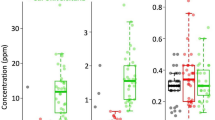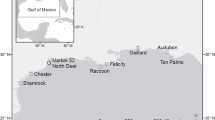Abstract
Colonially-nesting species of herons and egrets breed mainly in coastal areas, along rivers or near other large bodies of water. Such areas are also preferred for human development, exposing nesting birds to various pollutants. From 1989–1991, the concentrations of heavy metals and selenium were studied in the feathers of fledgling cattle egrets Bubulcus ibis, a terrestrially-feeding insectivore, from New York and Delaware in the northeastern United States, from Puerto Rico, and from Egypt. There were geographic differences in the concentrations of lead, mercury, cadmium, manganese, selenium, and chromium in the feathers of these egrets. Lead levels were 41 times higher in the feathers of cattle egrets from Cairo compared to the other sites. This difference was attributed to the continuing use of leaded gasoline and the dense automobile traffic in Cairo. However, other differences remain unexplained. Similarly, levels of chromium and manganese were also higher in Cairo than at any other sites. Cadmium levels were similar at all places except for higher levels in eastern Puerto Rico. Mercury concentrations were twelve times higher in the feathers of cattle egrets at Aswan compared to Cairo. In Puerto Rico, we also compared levels in adult cattle egrets with young and found higher concentrations of mercury and manganese, but lower concentrations of selenium in the adults. Using feathers from young cattle egrets is a potentially sensitive tool for biomonitoring for metals, especially lead, since they reflect the local area surrounding the breeding colony.
Similar content being viewed by others
References
Applequist M, Asbirk S, Draback L (1984) Mercury monitoring: Mercury stability in bird feathers. Marine Pollut Bull 15:22–24
Braune BM, Gaskin DE (1987) A mercury budget for the Bonaparte's gull during autumn moult. Ornis Scand 18:244–250
Burger J (1979) Resource partitioning: Nest site selection in North American herons and egrets. Amer Midl Nat 101:191–210
Burger J (in press) Metals in feathers of brown noddy (Arous stolidus): Evidence for bioaccumulation or exposure levels? Environ Monit Assess
Burger J, Gochfeld M (1982) Host selection as an adaptation to host dependent foraging success in the Cattle Egret (Bubulcus ibis). Behaviour 79:212–229
—, — (1991a) Lead, mercury and cadmium in feathers of tropical terns in Puerto Rico and Australia. Arch Environ Contam Toxicol 21:311–315
—, — (1991b) Fishing a superfund site: Dissonance and risk perception of environmental hazards by fisherman in Puerto Rico. Risk Analysis 11:269–277
--, -- (1992) Lead and cadmium accumulation in eggs and fledgling seabirds in the New York bight. Environ Toxicol Chem
Department of Commerce (1988) National status and trends program: Benthic surveillance project, US Dept of Commerce, Northeast Fisheries Center
EPA (1981) Interim methods for sampling and analysis of priority pollutants in sediments and fish tissue. US Environmental Protection Agency, EPA 600/4-81-055, Cincinnati, OH
Furness RW, Muirhead SJ, Woodburn M (1986) Using bird feathers to measure mercury in the environment: relationship between mercury content and moult. Mar Pollut Bull 17:27–37
Furness RW, Lewis SA, Mills JA (1990) Mercury levels in the plumage of red-billed gulls Larus novaehollandiae copulinus of known sex and age. Environ Pollut 63:33–3
Gochfeld M (1980) Tissue distribution of mercury in normal and abnormal young common terns. Mar Pollut Bull 11:362–366
Grue CE, O'Shea TJ, Hoffman DJ (1986) Lead concentrations and reproduction in highway-nesting barn swallows. Condor 86:383–389
Hancock J, Kushlan J (1984) The Herons Handbook. Harper and Row, Publ. NY, NY
Heinz GH (1980) Comparison of game-farm and wild-strain mallard ducks in accumulation of methylmercury. J Environ Pathol Toxicol 3:379–386
Hindy KT (1991) Study of alluvial soil contamination with heavy metals due to air pollution in Ciaro. Internatl Environ Studies 38:273–279
Honda K, Min BY, Tatsukawa R (1986) Distribution of heavy metals and their age-related changes in the Eastern Great White Egret, Egretta alba modesta, in Korea. Arch Environ Contam Toxicol 15:185–19
Hulse M, Mahoney JS, Schroder JD, Hacker CS, Pier SM (1980) Environmentally acquired lead, cadmium and manganese in cattle egret, Bubulcus ibis, and the laughing gull, Larus atricilla. Arch Environ Contam Toxicol 9:69–78
Messer JJ, Lindhurst RA, Overton WS (1991) An EPA Program for monitoring ecological status and trends. Environ Monit Assess 17:67–78
National Oceanographic and Atmospheric Administration (1988) A summary of data on tissue contamination from the first three years (1986–1988) of the mussel watch program. NOAA. Tech. Mem. NOS OMA 49. Rockville, MD
O'Connor TP, Ehler CN (1991) Results from the NOAA National Status and Trends program on distribution and effects of chemical contamination in the coastal and estuarine United States. Environ Monit Assess 17:33–49
Ohlendorf HM, Hothem RL, Bunck CM, Aldrich TW, Moore JR (1986) Relationships between selenium concentrations and avian reproduction. Trans 51st NA Wildl and Nat Res Conf, pp 330–342
Ohlendorf HM, Kilness AW, Simmons JL, Stroud RK, Hoffman DJ, Moore JF (1988) Selenium toxicosis in wild aquatic birds. J Toxicol and Environ Health 24:67–92
Ohlendorf HM, Hothem RL, Welsh D (1989) Nest success, cause-specific nest failures, and hatchability of aquatic birds at selenium-contaminated Kesterson Resevoir and a reference site. Condor 91:787–796
Peakall DB (1991) Animal biomarkers and pollution indicators. Chapman and Hall, New York, NY
Swanson RL, Bell TM, Kahn J, Olha J (1991) Use impairments and ecosystem impacts of the New York bight. Chem Ecol 5:99–127
Walsh PM (1990) The use of seabirds as monitors of heavy metals in the marine environment. In: Furness RW, Rainbow PS (eds) Heavy metals in the marine environment. CRC Press, Boca Raton, FL
Author information
Authors and Affiliations
Rights and permissions
About this article
Cite this article
Burger, J., Parsons, K., Benson, T. et al. Heavy metal and selenium levels in young cattle egrets from nesting colonies in the northeastern United States, Puerto Rico, and Egypt. Arch. Environ. Contam. Toxicol. 23, 435–439 (1992). https://doi.org/10.1007/BF00203806
Received:
Revised:
Issue Date:
DOI: https://doi.org/10.1007/BF00203806




